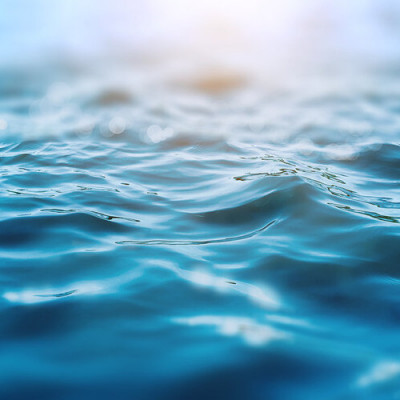
2021-09-15
Visited : 1696
The novel superhydrophobic coating, which can potentially be used to create more efficient fuel cells and sensitive toxic gas detectors, can keep materials dry for longer and at greater depths.
A team of researchers at the University of Central Florida have created a new nanomaterial that repels water and can stay dry even when submerged underwater.
The discovery could open the door to the development of more efficient water-repellent surfaces, fuel cells and electronic sensors to detect toxins. The work is documented in the cover story of this month’s Advanced Materials journal.
Debashis Chanda, a professor at UCF’s NanoScience Technology Center, led the team that created these novel superhydrophobic films and coating from nanomaterials. He was inspired by nature and evolution of certain plants and biological species
“Being water repellent or hydrophobicity is nature’s tool to protect and self-clean plants and animals against pathogens like fungi, algae growth and dirt accumulation,” Chanda says. “We took our cues from the structure of a lotus leaf and synthesized nanostructured materials based on molecular crystals of fullerenes.”
Fullerenes (C60 and C70) are built by bundling carbon molecules — the basic building block of the universe. Carbon comes in various forms. In special circumstances 60 or 70 such carbon molecules can bound together to form a cage-like closed structure, called fullerenes. These cages can stack on each other to form tall crystals called fullerites.
By placing a drop of a gel created from fullerites on any surface, a super water-repellent state is triggered, Chanda says. The unique cage-like structure of the gel doesn’t interfere with the original material being treated, which means they preserve their unique functional properties. That means the new super surface can potentially be used for splitting water, bacterial disinfection, hydrogen generation or electrocatalysis — all of which can be generated in fluid environments.
“For example, the new gel makes splitting electrocatalysis easier, which could lead to more efficient fuel cells,” Chanda says. “The same gel can lead to better electron acceptors, which are key in developing highly sensitive detectors and sensors for toxic gases. There is a lot of potential. It is quite exciting.”
The majority of previously reported hydrophobic surfaces have been achieved by designing microscopic patterns that involves complex lithography or etching processes that cannot be performed on all surfaces. And not all hydrophobic surfaces previously developed remain dry when submerged underwater for more than a few minutes at a certain water depth.
“We found that fullerite films display extreme water repellency regardless of direction of water flow and even under continuous flow of water over them,” Chanda says. “Even when they are submerged at 2 feet of water for several hours, the films remain dry. We even found that they can capture and store gases underwater in the form of plastrons — a form of trapped bubbles mimicking the miraculous alkali fly of California’s Mono Lake.”
Rinku Saran, a post-doctoral fellow in Chanda’s lab, and lead author of the study says he’s excited about the potential.
“Because these superhydrophobic surfaces are created in a very facile and easy process using pure carbon fullerenes we anticipate they can be exploited in many experiments and real-life applications,” Saran says.
Read the original article on University of Central Florida.